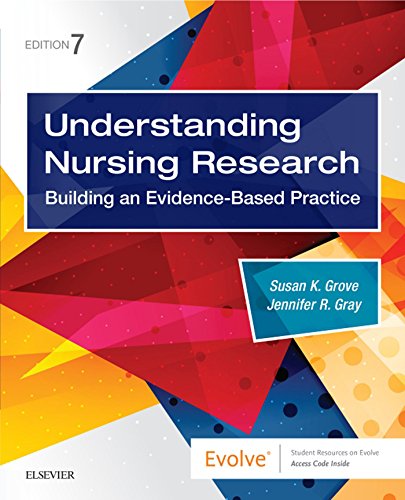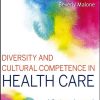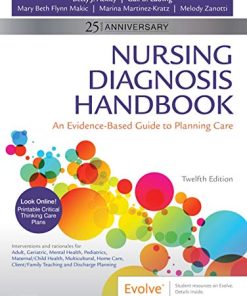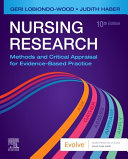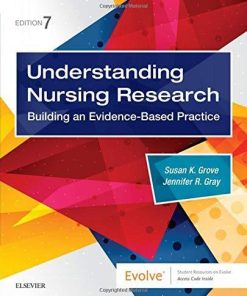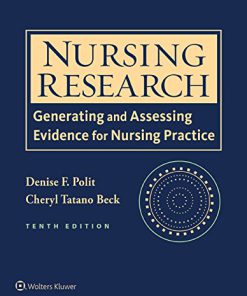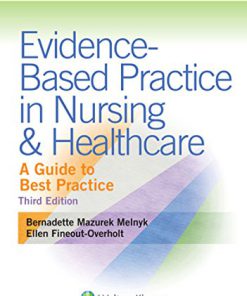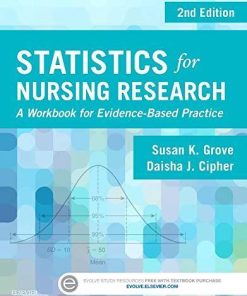Understanding Nursing Research E Book: Building an Evidence Based Practice 7th Edition, (Ebook PDF)
$50.00 Original price was: $50.00.$25.00Current price is: $25.00.
Understanding Nursing Research E Book: Building an Evidence Based Practice 7th Edition, (Ebook PDF) – Digital Instant Dowload.
Understanding Nursing Research E Book: Building an Evidence Based Practice 7th Edition, (Ebook PDF) – Digital Instant Dowload.
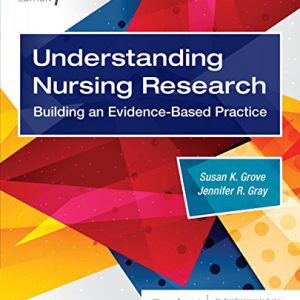
Product details:
- ISBN-10 : 0323532055
- ISBN-13 : 978-0323532051
- Author: Susan K. Grove PhD RN ANP-BC GNP-BC (Author), Jennifer R. Gray PhD RN FAAN (Author)
Edition after edition, Burns & Grove’s Understanding Nursing Research: Building an Evidence-Based Practicehas been known as a leading textbook of nursing research for evidence-based practice (EBP). Now under the authorship of Drs. Grove and Gray, this streamlined and enhanced 7th edition gives you even sharper insights into understanding, appraising, and applying published research for evidence-based nursing practice. Known for its authoritative content, time-tested systematic approach, and unique research example format – the new edition of this bestselling textbook includes an enhanced EBP focus, new content on the emerging trend of mixed-methods research, and a spotlight on need-to-know information to equip you to apply the latest evidence to your clinical practice.
Table contents:
Chapter 1: Introduction to Nursing Research and Its Importance in Building an Evidence-Based Practice
What is nursing research?
What is evidence-based practice?
Historical development of research in nursing
Acquiring knowledge in nursing
Acquiring knowledge through nursing research
Purposes of research for implementing an evidence-based nursing practice
Understanding your role in nursing research
Determining the best research evidence for practice
Key Points
Chapter 2: Introduction to Quantitative Research
What is quantitative research?
Problem-solving and nursing processes: basis for understanding the quantitative research process
Identifying the steps of the quantitative research process
Reading research reports
Practice reading a quasi-experimental study
Key Points
Chapter 3: Introduction to Qualitative Research
Identifying the steps of the qualitative research process
Qualitative research approaches
Sampling and recruitment
Data collection methods
Data management and analysis
Rigor in qualitative research
Key Points
Chapter 4: Examining Ethics in Nursing Research
Unethical research: 1930s through the 1980s
Ethical standards for research
Protecting human subjects
Understanding informed consent
Understanding institutional review
Current issues in research ethics
Key Points
Chapter 5: Examining Research Problems, Purposes, and Hypotheses
What are research problems and purposes?
Identifying the problem and purpose in quantitative and qualitative studies
Determining the significance of a study problem and purpose
Examining the feasibility of a study problem and purpose
Examining research objectives, questions, and hypotheses in research reports
Understanding study variables and research concepts
Key Points
Chapter 6: Understanding and Critically Appraising the Literature Review
Purpose of the literature review
Sources included in a literature review
Critically appraising literature reviews
Reviewing the literature
Key Points
Chapter 7: Understanding Theory and Research Frameworks
Understanding the elements of theory
Levels of theoretical thinking
Examples of critical appraisal of research frameworks
Key Points
Chapter 8: Clarifying Quantitative Research Designs
Identifying quantitative research designs in nursing studies
Understanding concepts relevant to quantitative research designs
Examining the design validity of quantitative studies
Descriptive designs
Correlational designs
Elements of designs examining causality
Quasi-experimental designs
Experimental designs
Key Points
Chapter 9: Examining Populations and Samples in Research
Understanding the key concepts of sampling theory
Representativeness of a sample in quantitative research
Probability sampling methods
Nonprobability sampling methods commonly used in quantitative research
Sample size in quantitative studies
Sampling in qualitative research
Sample size in qualitative studies
Research settings
Key Points
Chapter 10: Clarifying Measurement and Data Collection in Quantitative Research
Concepts of measurement theory
Accuracy, precision, and error of physiological measures
Use of sensitivity, specificity, and likelihood ratios to determine the quality of diagnostic tests
Measurement strategies in nursing
Data collection process
Key Points
Chapter 11: Understanding Statistics in Research
Understanding theories and concepts of the statistical analysis process
Identifying the steps of the data analysis process
Statistics conducted to describe variables
Determining the appropriateness of inferential statistics in studies
Statistics conducted to examine relationships
Statistics conducted to predict outcomes
Statistics conducted to examine differences
Interpreting research outcomes
Key Points
Chapter 12: Critical Appraisal of Quantitative and Qualitative Research for Nursing Practice
Purpose of conducting critical appraisals of studies in nursing
Key principles for conducting intellectual critical appraisals of quantitative and qualitative studies
Understanding the quantitative research critical appraisal process
Example of a critical appraisal of a quantitative study
Understanding the qualitative research critical appraisal process
Example of a critical appraisal of a qualitative study
Key Points
Chapter 13: Building an Evidence-Based Nursing Practice
Benefits and challenges related to evidence-based nursing practice
Developing clinical questions to search for existing research-based evidence for use in practice
Critically appraising research syntheses: systematic reviews and meta-analyses
Critically appraising meta-syntheses
Critically appraising mixed-methods systematic reviews
Models to promote evidence-based practice in nursing
Implementing evidence-based guidelines in practice
Introduction to evidence-based practice centers
Introduction to translational research
Key Points
Chapter 14: Introduction to Additional Research Methodologies in Nursing: Mixed Methods and Outcomes Research
Mixed methods research and design
You may also like…
Medicine & Health Science
Medicine - Medicine & Nursing Reference
Uncategorized
Essentials of Nursing Research: Appraising Evidence for Nursing Practice 9th Edition, (Ebook PDF)
Uncategorized
Evidence Based Practice in Nursing & Healthcare: A Guide to Best Practice 4th Edition, (Ebook PDF)
Uncategorized
Understanding Nursing Research: Building an Evidence-Based Practice 7th Edition – Ebook PDF Version
Uncategorized
Nursing Research: Generating and Assessing Evidence for Nursing Practice 10th Edition, (Ebook PDF)
Uncategorized
Evidence Based Practice in Nursing & Healthcare: A Guide to Best Practice 3rd Edition, (Ebook PDF)
Uncategorized
Statistics for Nursing Research: A Workbook Evidence-Based Practice 2nd Edition – Ebook PDF Version


